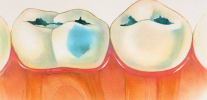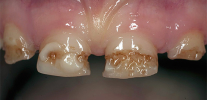
Baby teeth with caries in children must be cured. The approach of some parents “They will fall out anyway, there is nothing to torment a child and spend money” is a crime against the health of the baby.
Timely treatment of caries of milk teeth is even more important than the treatment of permanent teeth. And that's why:
- Normal teething of permanent teeth and the formation of bite largely depends on the health and timely change of milk teeth. A full set of milk teeth forms the correct jaw size. If they are destroyed by caries and fall out or are removed prematurely, then the jaw may not be formed properly. It is highly likely to lead to the wrong bite in the future or curvature of the teeth, their ugly location. As a result, a child that has not been cured in a tooth tooth will, at the time of its maturity, be paid with braces at best, and at worst in staggered teeth with psychological complexes.
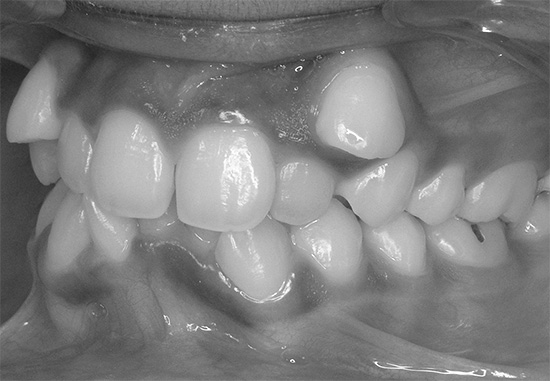
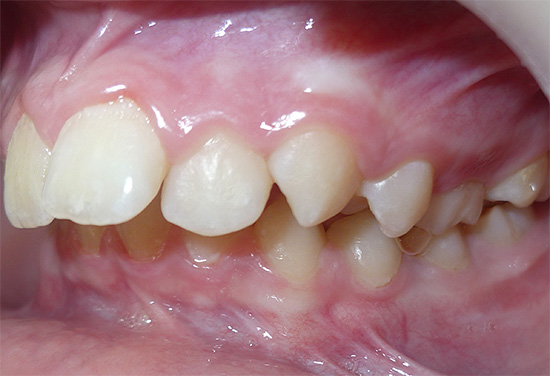
- Caries on baby teeth may be complicated by pulpitis and periodontitis, which may cause cysts in the root zone, as well as the germ of a permanent tooth.
- Running caries is often a reason for ridicule in the children's team.
- Also, do not forget that the appearance of caries is a sign of violation of the rules of oral hygiene, incorrect diet or lack of minerals in the diet, and sometimes - a symptom of problems with the immune system. If you ignore these problems at the beginning of your life, then by the middle of his child can go without any healthy teeth and with a set of associated diseases.
- With the early removal of chewing milk teeth, the child will not be able to chew food normally. As a result, an insufficiently processed food lump will enter the gastrointestinal tract, which can lead to digestive disorders.
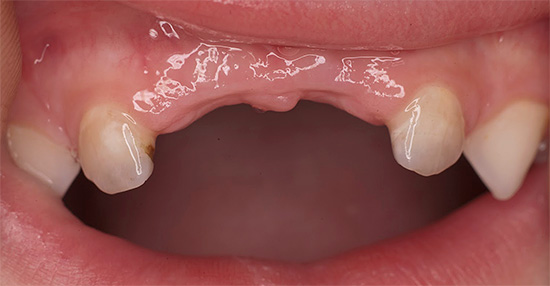
From the practice of the dentist
Often parents do not even treat serious forms of caries complications, and the periodontitis in a child can turn into periostitis, osteomyelitis, abscess or phlegmon. Moreover, the rate of death among children from caries complications is higher,than in adults, since with certain factors weakening the immune system, the process from pulpitis to abscess and phlegmon in a child can take a few days and even occur within a day.
Therefore, the first thing to do when detecting caries of milk teeth in a child is to contact a pediatric dentist. After the examination, the doctor will tell you how and what teeth will need to be treated, what methods and means for this should be applied and how to make the treatment as comfortable as possible for the child.
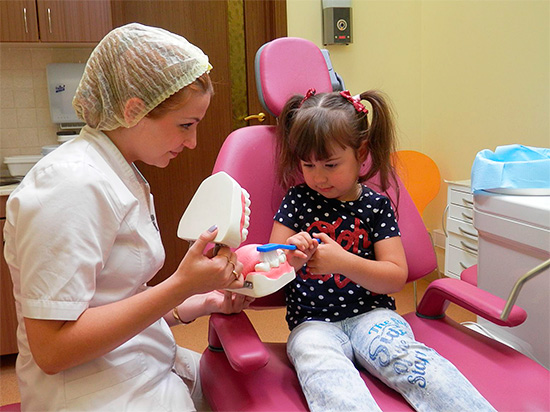
On a note
Only in very rare cases, tooth decay can really not be treated. The doctor usually makes such a decision if the change of teeth in a child has already begun, caries is found on the tooth, which is likely to fall out within six months, and the disease itself is sluggish, chronic. In this case, caries simply will not have time to lead to serious consequences. However, we repeat: this decision can only be made by a professional dentist on the basis of an examination of the child.
The specific features of the treatment of milk teeth
Treatment caries of primary teeth in children carried out taking into account the specifics of the structure and life cycle of the teeth themselves.
For example, milk teeth are quickly erased. This is a normal process that must be considered when selecting the material of the seal. If the material is harder than the tooth itself, then after a certain time the filling will begin to protrude beyond the surrounding tissues and prevent the child from chewing.
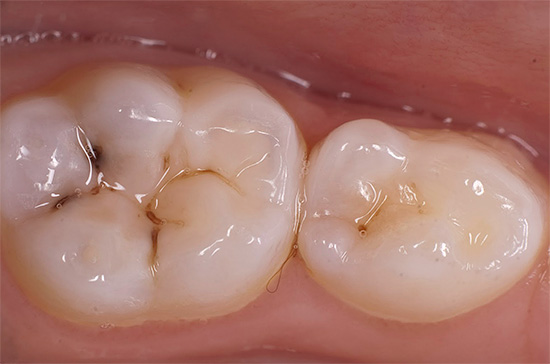
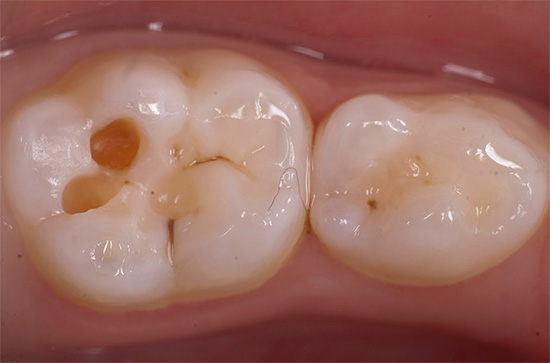
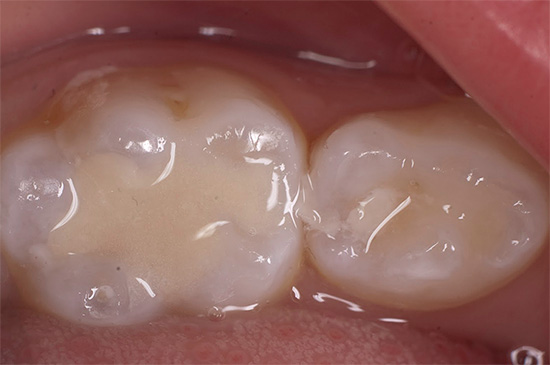
Typically, glass ionomer cements are used in the treatment of caries on milk teeth. In this case, in addition to the abrasion of the filling, which occurs naturally at the same time as the walls of the tooth adjacent to it, fluorides are infiltrated into the tissues surrounding the filling, which, in turn, contributes to their additional mineralization and strengthening.
In addition, children often have a bottle and blooming cariesthat develop very quickly. While parents have time to notice the disease and bring the child to the doctor, the pathological process can spread to most of the teeth and damage some of them especially badly. As a result, almost all teeth will have to be treated, and this will have to be done in several sessions, and the therapy itself will be very tiring for the child.
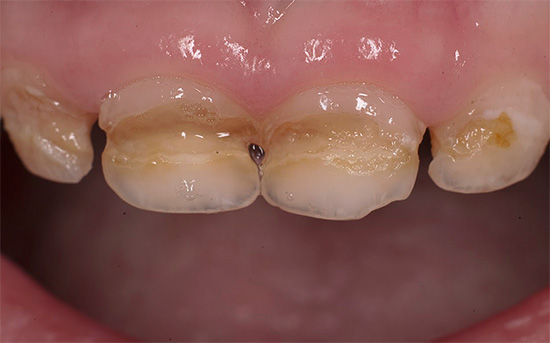
Methods of treatment of caries at different stages of the disease
In the early stages of caries development, when only tooth enamel is damaged, it is usually possible to manage with a conservative remineralizing therapy. It does not use a drill: the demineralized areas of the teeth are first cleaned and then treated with special preparations that allow restoring damaged enamel.
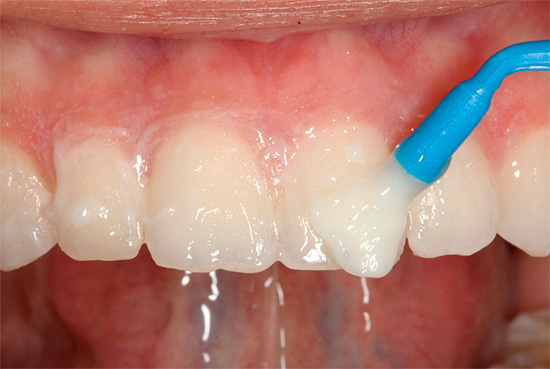
Today, ICON (Aikon) technology is also widely used for the treatment of initial caries: a special composite material is applied to the damaged part of the tooth that fills all the pores resulting from a carious lesion. This material hardens and provides reliable and long-term protection of the treated area from further destruction.
Thanks to ICON caries treatment technology, regular examinations of a child at a dentist are becoming even more relevant. It is much more efficient and easier to treat caries of milk teeth in the early stages without a drill and fillings than to torment a baby later in the event of the destruction of enamel and dentin.

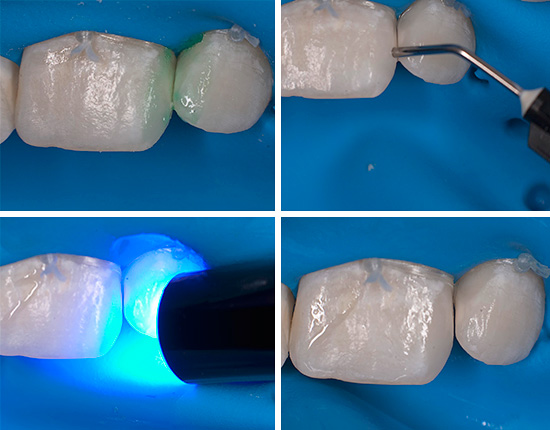
It should be noted, however, that for cervical defects that are close to the edge of the gum,ICON technique is limited to use due to too thin and poorly mineralized enamel (dentin cannot be infiltrated with the drugs used). Children under 3 years of age do not want to apply the technique.
Tips for parents
Regular examinations of the teeth in a child can not only reveal hidden caries processes and determine the cariogenic situation in the oral cavity, but also identify for parents a set of necessary rules to preserve the surfaces of the teeth that are not affected by caries. It is important to begin cleansing already from the appearance of the first baby tooth. It is enough to wipe the tooth with special wipes or use for this purpose a toothbrush-napalechnik.
The first real toothbrush purchased for a child should be:
- With very soft bristles;
- With a small and non-traumatic round head;
- With comfortable grip handle.
Teaching brushing should take place in the form of a game. It should start from 1-1.5 years. Monitoring the cleansing of all surfaces accessible to the brush and helping the child with this is done by adults. The combination of brushes with children's toothpastes is recommended not earlier than 2 years, when the child learns to spit.
Today, another method of conservative treatment of caries of dairy teeth without a drill, silver plating, is increasingly recognized as obsolete. When it is silver salts are applied to carious areas, which leads to the death of bacteria here (silver has bactericidal properties) and in the future - to protect these areas from repeated caries lesions.
From the silver salts on the surface of the treated area fine metallic silver is restored, which has a dark gray color. It greatly spoils the appearance of the teeth, and with them the baby’s mouth does not look any better than with tooth decay. In addition, silvering must be repeated once a month, which can be quite problematic.
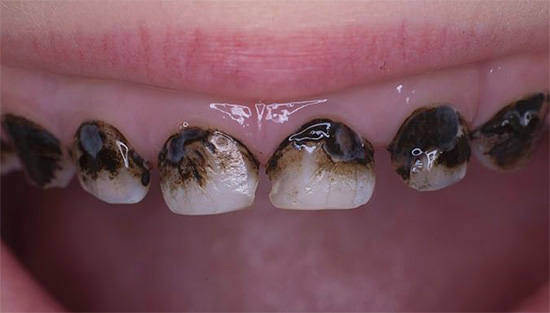
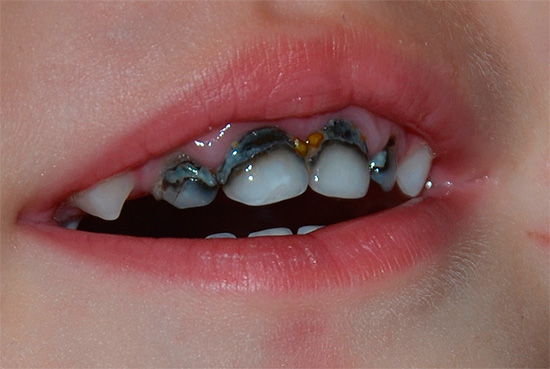
In general, the effectiveness of the procedure of silvering teeth, as a way to prevent the development of caries, is rather low.
At the penetration of caries under the enamel and the defeat of the dentin, the infected cavity is excised, disinfected and filled with a filling material. In some clinics, the cleaning of carious lesions is performed without a drill using a jet of abrasive material or special substances that dissolve the affected tissue.In addition, in some clinics, a laser is used to remove the affected tissues, but to be assigned to a doctor, the child’s age and the specific clinical situation must be considered.
In rare cases, for example, in severe forms of bottle caries, long before a tooth change, crowns are installed for children using a special technology (no turning of the tooth is performed). For chewing teeth, such crowns are usually made of metal, and for incisors - from composite materials. The installation of the crown in this case is carried out in one visit to the dentist, and the crowns on the front teeth are installed in just 20-25 minutes.

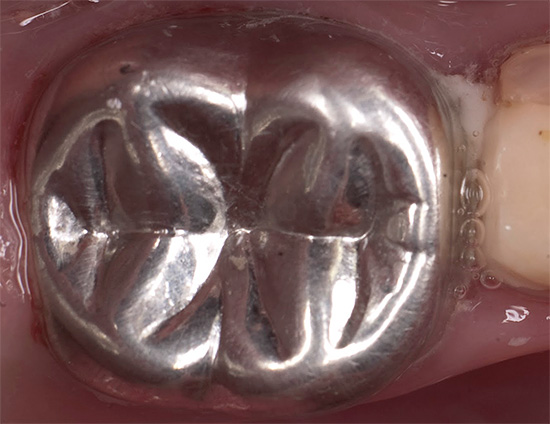
Anesthesia, local anesthesia and pain-free treatment: psychological aspects of therapy in children
The control of the patient during the treatment procedure is no less difficult than the actual caries therapy itself. The children themselves are restless, and keeping them stationary in a chair for at least half an hour is incredibly difficult.
The problem is exacerbated if the child is openly afraid of the dentist or the drill and waits for it to be painful. He may just not open his mouth. And the younger the child, the more acute the problem.It is solved in several ways:
- Many children over the age of 6-7 are obedient enough and the presence in the office of one of the parents allows them to sit still.
- The presence in the office of distracting design elements (for example, drawings on the walls, toys on the ceiling), a TV near the chair, a bright robe at the dentist — all this distracts and keeps the attention of the child who can devote to viewing these objects or watching the cartoon all the time .
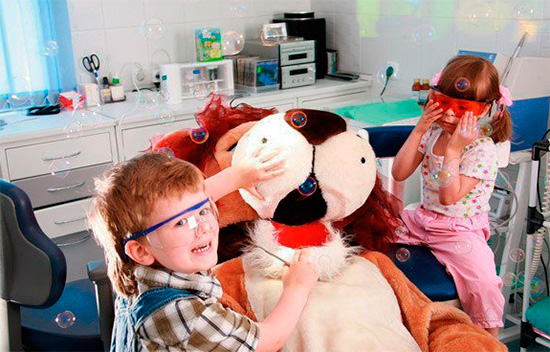
- The use of colored fillings. If the child knows what it is, he willingly endures it all the time, just to get such a seal and then brag to his friends.

- Local anesthesia for children who are afraid of pain during dental treatment. Before the injection itself, the child is treated with a gum with anesthetic gel, and the baby does not feel any injection or pain during further work.
- Nitrous oxide sedation, in which the child relaxes, his feeling of fear is dulled, a short sleep may occur.
- Anesthesia
It is anesthesia that parents usually fear most. This is wrong: most drugs used today for general anesthesia are safe.Especially since before the treatment itself, the child takes the tests and carries out the necessary tests to make sure that he does not have individual contraindications to the use of anesthesia. And the doctor himself uses anesthesia only if other means and methods do not allow for manipulation.
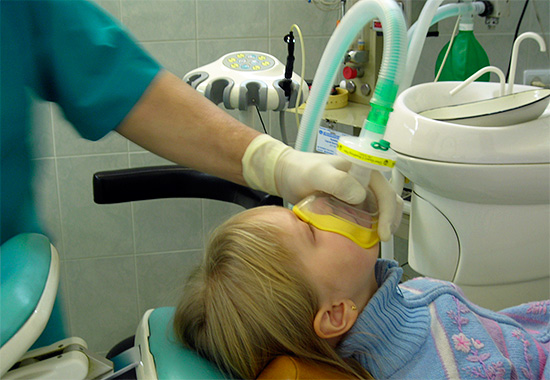
Many parents are afraid that anesthesia may affect the mental development of the child, impair his memory, lead to a delay in the development of speech. Theoretically, such situations are possible, but they are extremely rare. Statistics show that such complications of anesthesia in children are extremely rare, and in many cases the cause of a developmental disorder is not the anesthesia itself, but a severe fright in the hospital or the effects of the disease, which was treated with anesthesia.
Feedback
“In Sweden, besides narcosis, there are no options. She is three years old, she trusts the doctor, sits in a chair, does not cry, but simply says no. She said - the doctor does not. It is impossible to force her, because this is child abuse, and she refuses. I had to do anesthesia. She left it for a very long time, but there were no consequences. ”
Anna, Malmo
In cases of neglected bottle caries in children under the age of 3, anesthesia is the only way to manipulate. It may take at least 2-3 hours for treatment, and it is impossible to force the baby to sit motionless in an unfamiliar environment all this time.

In any case, the final decision is always made by parents. The doctor himself will not do anesthesia and carry out the operation if he has concerns about the consequences of the use of anesthesia for the child.
Practice shows that overwhelmingly common sense wins and parents agree to anesthesia instead of risking the health and beauty of the child in the future.
Feedback
“I have a son of 4.5, a daughter of 2 years. We went to the examination, the son found two small holes, and the daughter had caries on 5 teeth, there is a plaque and one tooth is already without top. The doctor immediately offered us anesthesia. Although the clinic is good, I was somehow scared. I read about Sevoran at home, it seems that there is nothing terrible in him, but still anesthesia is 2.5 hours - that's more than appendicitis is done! They decided to refuse, they coped with their son. And cartoons showed him, and promised everything in the world, and read fairy tales, but healed his teeth, one for each visit. And Sasha didn’t even open her mouth. She said no, that's all.What to do here? I had to do anesthesia, but everything was in order, it cost. ”
Evgenia, Moscow
Why treat baby teeth if it falls out anyway? Parents note
Interesting nuances regarding the treatment of milk teeth under general anesthesia

